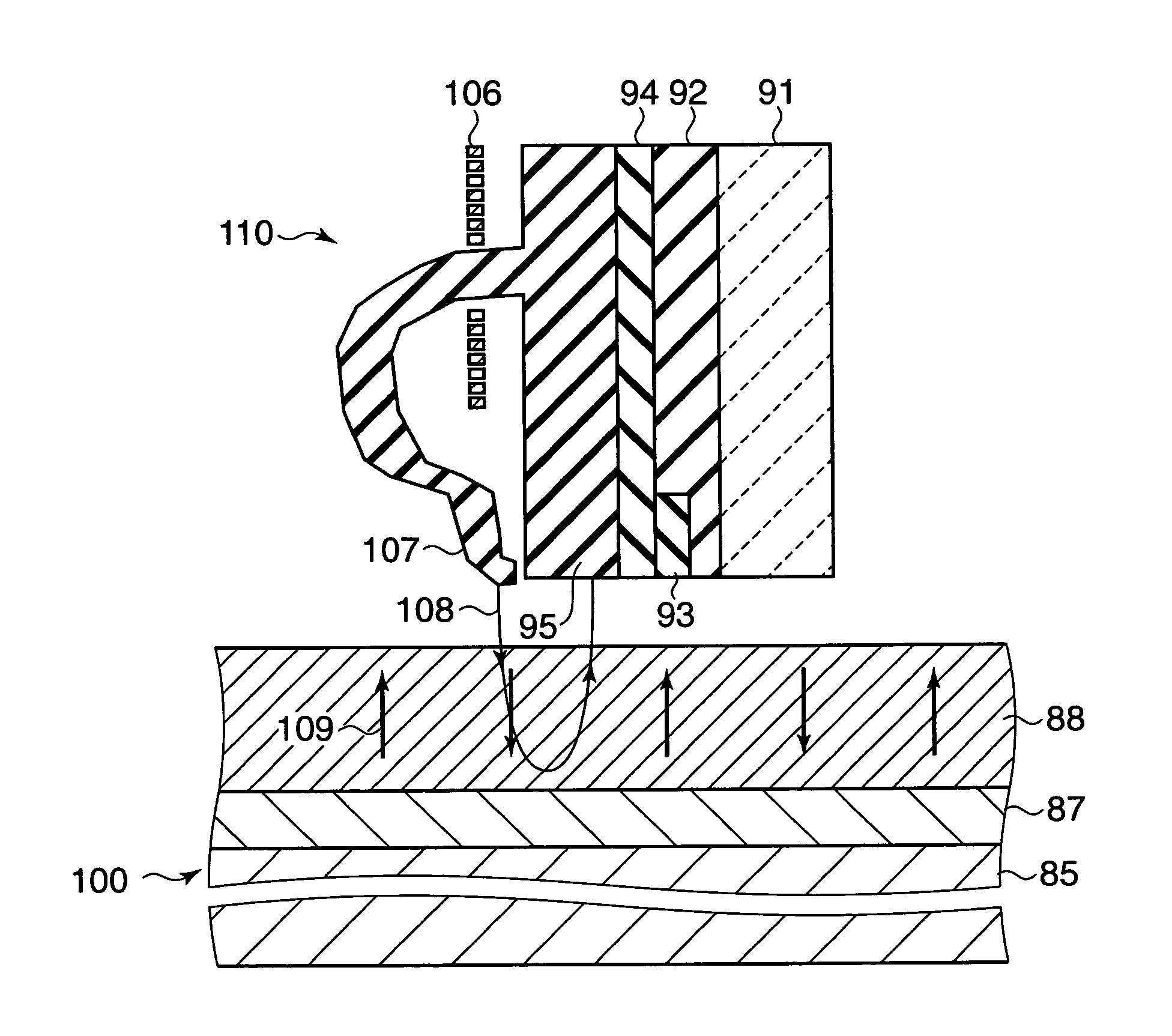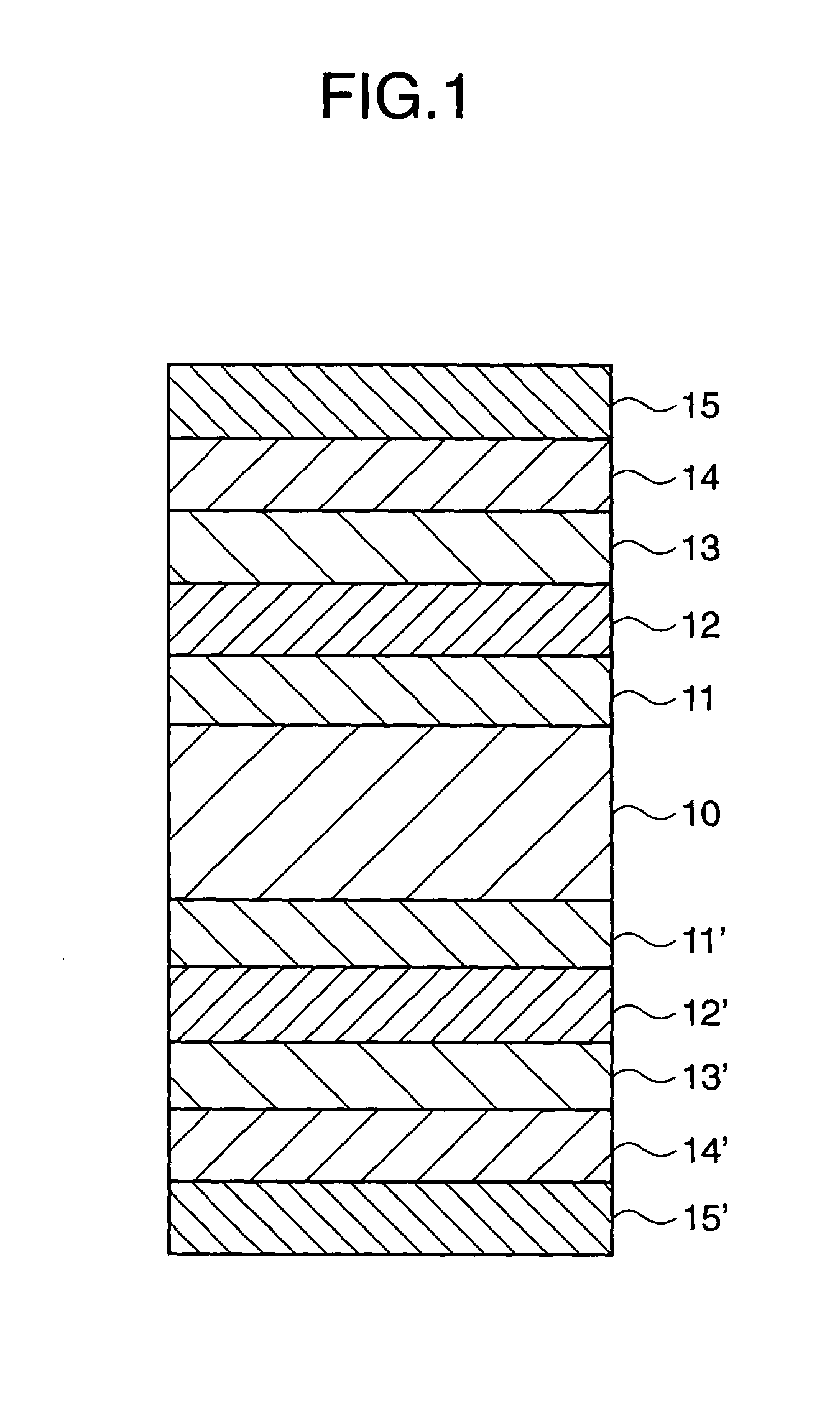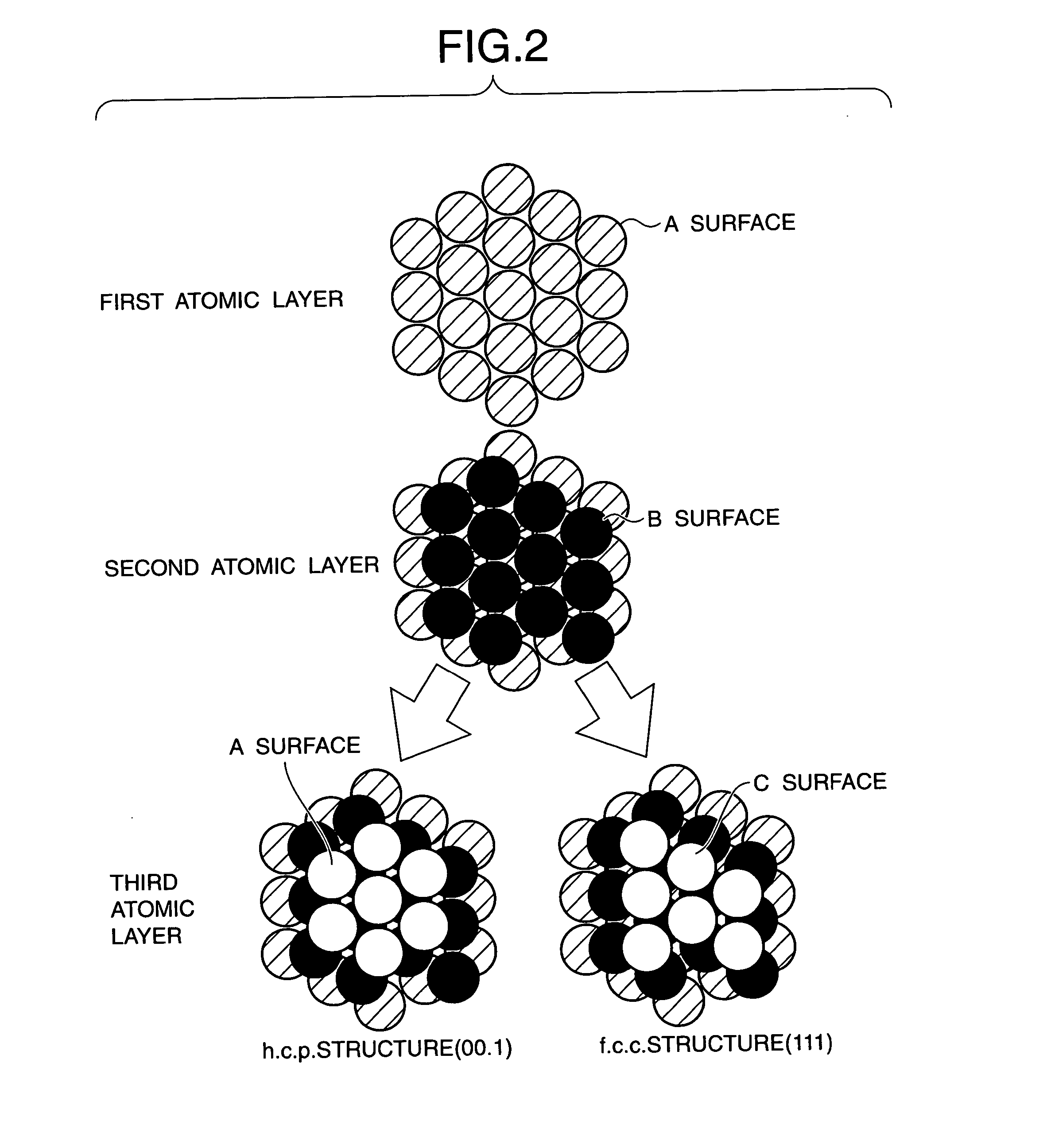Perpendicular magnetic recording medium and magnetic storage apparatus using the same
a magnetic recording medium and perpendicular magnetic technology, applied in the field of magnetic recording mediums, can solve the problems of reducing read output, in-plane recording medium may have a basic performance problem for saving recording information, and difficult to deal with a much higher recording density expected in the futur
- Summary
- Abstract
- Description
- Claims
- Application Information
AI Technical Summary
Benefits of technology
Problems solved by technology
Method used
Image
Examples
third embodiment
[0049] Third Embodiment
[0050] In the embodiment, examination was carried out regarding noise reduction by adding an element having a b. c. c. structure to a Cu non-magnetic intermediate layer. FIG. 6 shows a change in medium noise when Cr was added to the Cu non-magnetic intermediate layer by varying concentration in the medium of the structure of the first embodiment. For the measurement of medium noise, a signal was recorded at a recording density 500 kFCI by using the single magnetic pole head, and read back by a GMR head stably floated at a height of 40 nm or lower. In the graph of FIG. 6, the change of medium noise is shown as a change in relative relation to a sample having no Cr added at all set as 1.
[0051] In FIG. 6, in a region where Cr added concentration is set in the range from 0.5 at. % to 30 at. %, a phenomenon of a medium noise reduction is recognized. The setting of Cr concentration equal to 0.5 at. % or lower is not advantageous for micronizing the crystal grain siz...
fourth embodiment
[0053] Fourth Embodiment
[0054] In the embodiment, examination was carried out as to the layer thickness of the intermediate layer. The structure of a medium examined in the present embodiment will now be described by referring to FIG. 1. On the glass substrate 10 of an outer diameter 65 mm.phi., Fe-8 at. % Ta-12 at. % C soft magnetic layers 11 and 11' are formed by 400 nm. Then, Cu-15 at. % Nb non-magnetic intermediate layers 12 and 12' are formed by changing a layer thickness, and Co-35 at. % Cr non-magnetic intermediate layers 13 and 13' are provided by 0 nm or 10 nm. After forming Co-21 at. % Cr-12 at. % Pt-2 at % Ta magnetic recording layers 14 and 14' by 25 nm, lastly C protective layers 15 and 15' are formed by 5 nm, and lubricant is applied.
[0055] As shown in FIG. 7, in any of the media having CoCr intermediate layers set to 0 nm and 10 nm in thickness, coercivity and squareness were increased with the increase of the layer thickness of the CuNb non-magnetic intermediate laye...
fifth embodiment
[0057] Fifth Embodiment
[0058] FIG. 8(a) is an upper surface view of an example of a magnetic storage apparatus using the perpendicular magnetic recording medium of the invention; and FIG. 8(b) is a sectional view taken on line A-A' of FIG. 8(a). A perpendicular magnetic recording medium 80 is held by a holding tool connected to a magnetic recording medium driver 81, and a magnetic head 82 is disposed oppositely to each surface of the perpendicular magnetic recording medium 80. The recording unit of the magnetic head 82 is composed of a single magnetic pole head, and the reading unit thereof is composed of a magnetoresistive effect device of GMR, TMR or the like. The magnetic head 82 is stably floated low at a height of 40 nm or lower, and driven to a desired track by a magnetic head driver 83 with head positioning accuracy of 0.5 .mu.m or lower.
[0059] FIG. 9 is a schematic sectional view showing the situation of magnetic recording in the perpendicular magnetic recording medium by th...
PUM
| Property | Measurement | Unit |
|---|---|---|
| thick | aaaaa | aaaaa |
| melting point | aaaaa | aaaaa |
| melting points | aaaaa | aaaaa |
Abstract
Description
Claims
Application Information
 Login to View More
Login to View More - R&D
- Intellectual Property
- Life Sciences
- Materials
- Tech Scout
- Unparalleled Data Quality
- Higher Quality Content
- 60% Fewer Hallucinations
Browse by: Latest US Patents, China's latest patents, Technical Efficacy Thesaurus, Application Domain, Technology Topic, Popular Technical Reports.
© 2025 PatSnap. All rights reserved.Legal|Privacy policy|Modern Slavery Act Transparency Statement|Sitemap|About US| Contact US: help@patsnap.com



